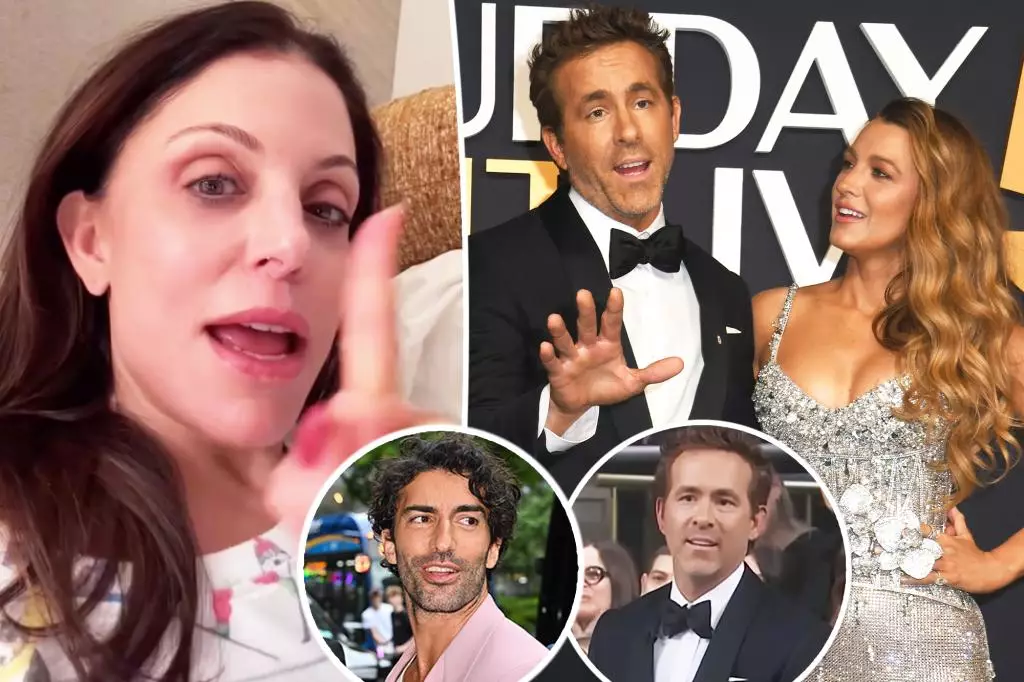In an era where celebrity culture intertwines seamlessly with social media and public perception, the decisions made by Blake Lively and Ryan Reynolds to appear together at the recent “SNL 50: The Anniversary Special” has sparked considerable discussion. Bethenny Frankel, former star of “The Real Housewives of New York City,” lauded their move as “brilliant” in a TikTok video, positioning it as a savvy marketing strategy that resonates with current pop culture trends. This public appearance comes at a particularly contentious time, as the couple faces serious legal issues involving Justin Baldoni, the director of Lively’s latest film, “It Ends With Us.”
While Frankel’s endorsement might suggest a calculated public relations success, others in Hollywood have voiced skepticism about the appropriateness of the couple’s appearance in light of ongoing lawsuits. Hollywood insiders argue that attending the show might have repercussions, potentially giving Baldoni’s legal team ammunition to dismiss Lively’s case. This duality highlights the complex relationship between celebrity visibility and legal accountability.
Frankel’s assertion of their appearance as “marketing genius” raises important questions about how public figures navigate controversies. The notion of leveraging a legal feud for enhanced visibility can be seen as astute; it shifts the narrative and allows Lively and Reynolds to appear unfazed in the face of serious allegations. By participating in a high-profile event and making jokes about their situation, they are attempting to reclaim the narrative and place themselves in control of the public conversation.
However, such a strategy can backfire. The risk lies in the perception of disrespecting the gravity of legal matters. Critics may argue that undermining the seriousness of a lawsuit through humor can be seen as trivializing the experiences of those who face real threats and challenges in the entertainment industry. This dilemma underlines the multifaceted nature of public relations, where every move must be scrutinized for both its intent and its possible ramifications.
The audience’s relationship with celebrities is also a significant factor in this situation. Frankel noted that not everyone is immersed in the minutiae of public legal battles, suggesting that many viewers may be more willing to accept this playfulness as merely part of the game within Hollywood. Their presence at a culturally significant event like “SNL” could be interpreted as a reaffirmation of their brand and a demonstration of their resilience amid turmoil.
However, this perception is not universal. Some individuals may view their appearance as tone-deaf, especially given the serious nature of the allegations surrounding Baldoni. As public figures, Lively and Reynolds bear the responsibility of understanding how their actions are perceived by different segments of the audience, potentially leading to critiques or support based on personal biases.
The responses from within the industry provide an intriguing backdrop to this scenario. While Frankel’s comments celebrate the couple’s savvy, many insiders caution against approaching legal matters lightly. There are concerns that the lightheartedness showcased during the SNL event may harm Lively’s legal standing. This diverging viewpoint amplifies the complexity of celebrity actions amid controversy, reminding us that perception can be as pivotal as reality in the eyes of the legal system.
Additionally, Lively’s initial hesitation about attending further emphasizes the internal struggle celebrities face when caught between personal dilemmas and public appearances. The insights shared by sources indicate that she ultimately found value in celebrating her work and shared experiences with her spouse, which also speaks to their desire to forge ahead regardless of background noise.
In a landscape where public figures are under constant scrutiny, the interplay between personal life, legal matters, and public appearances remains intricate. The decision by Blake Lively and Ryan Reynolds to attend “SNL 50” serves as a case study in the potential benefits and pitfalls of using humor and visibility as tools to manage controversies. Amid applause and criticism, their appearance raises important considerations about the implications of celebrity actions, highlighting the tenuous balance between media engagement and personal integrity. As the legal proceedings against Baldoni unfold, the outcomes will undoubtedly shape not only Lively and Reynolds’ careers but also our understanding of how public personalities can navigate turbulent waters in the spotlight of fame.

